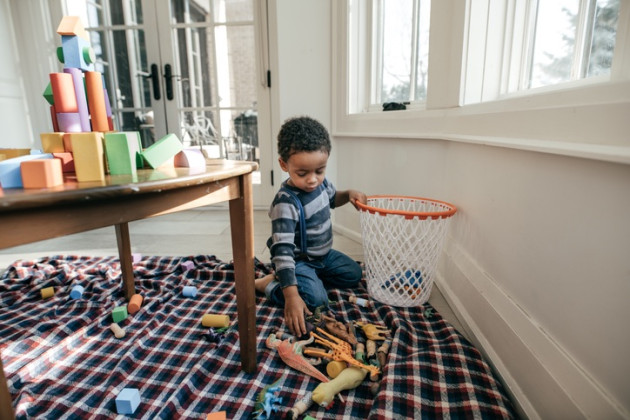7 Indoor Games for Little Kids To Play
By: Joanne Van Zuidarn
Got a kid’s bash to plan or a rare day with nothing on the agenda? Vintage games offer little ones a welcome break from apps and videos. Introduce your kids to one or two of these old-time favorites—but eventually show ‘em all.
1. Musical Chairs
Best for: Group playdates, birthday parties, vacation get-togethers, snow days or Sunday dinner with friends and family
Number of players: At least 4, but more will up the fun
Where to play: A space large enough to accommodate several chairs and ample room for kids to move around safely
What you need: Sturdy kid-size chairs (one fewer than the number of players), music and a “DJ”
How to play: Arrange the chairs in one straight line, two rows back-to-back, or a circle with the seats facing outward. Players stand single file, about a foot away from the setup. A parent or an older sibling starts the music with a plan to stop it at random moments. When the music stops, each player claims a seat. The player left standing is out. One chair is removed and the next round begins.
Game is over when: One child is left standing—well, sitting—in the remaining chair
Variation: Use pillows or cushions on the floor if you don’t have enough chairs.
2. Freeze Dance
Best for: All ages
Number of players: 1 or more
Where to play: An open, obstacle-free area
What you will need: Music and a “DJ”
How to play: The DJ starts the tunes while everyone dances—all moves count. When the music stops, kids freeze and hold the position—until the music starts again. Encourage kids to strike a unique pose—and reward all efforts. Or play the traditional way: kids who can’t hold the pose are out.
Game is over when: Fatigue takes over or only one dancer is left
Variation: Instead of asking players to freeze, give them 10 seconds to get into a position called out by the DJ, such as stand on one foot, in a star shape or on the floor on all fours.
3. Hide-and-Seek
Best for: All ages
Number of players: 2 or more
Where to play: In a house, a backyard or a park
How to play: Designate a spot as “home” and choose a player to be the seeker. The seeker closes their eyes and counts to 10 while the other children hide. (You may want to establish some rules beforehand, noting off-limit locations and no climbing on furniture or beds.) Once the seeker is done counting, they can start searching for the other players. Kids try to make it back to home base without being found or tagged. Tagged kids are out.
Game is over when: Only one player is left hiding. That child becomes the seeker in the next round.
Variation: If your house or apartment lacks space, have one kid “hide the thimble” or another small object instead and encourage other players to find it.
4. Hallway Bowling
Best for: All ages
Number of players: 1 or more
Where to play: Long, unobstructed hallways
How to play: Raid the recycling bin for 6 medium-to-large water bottles. Add enough water to give them some weight, and set the water bottles up at the end of the hallway—3 in the back row, 2 in the middle row and 1 in the front. Invite bowlers to stand at the other end of the hall with a basketball in hand. Each player bowls twice (except those who get a strike on the first round!). Each pin knocked over is worth one point.
Game is over when: Each child bowls 10 rounds. Highest score wins.
Variation: Slip glow sticks into water bottles and turn out the lights for some glow-in-the-dark fun.
5. Rock-Paper-Scissors
Best for: Squabbling sibs and calling dibs
Number of players: 2
Where to play: Anywhere
How to play: Kids stand face-to-face and shape one hand into a fist. At the count of 3, the players simultaneously make one of three gestures: a rock (fist closed), paper (open hand, palm down), or scissors (index and middle fingers extended, palm down).
Game is over when: One player overpowers the other: rock smashes scissors, scissors cut paper, and paper covers rock. Both players used the same gesture? Do it again.
Variation: 2 out of 3 rounds determine the winner.
6. Thumb Wrestling
Best for: Coordinated and competitive children of all ages
Number of players: 2 or more
Where to play: Kitchen table or island, the playroom or family-room floor.
How to play: Two players sit or stand face-to-face, extend their right hand, and clasp fingers into a locked position with their thumbs resting on top of closed fists. Moving thumbs back and forth, the players chant: “1, 2, 3, 4, I declare a thumb war! 5, 6, 7, 8, try to keep your thumb straight!” The ”war” begins as each player tries to pin the opponent’s thumb down with their own.
Game is over when: One child pins the other child’s thumb for a count of 5.
Variation: More than 2 kids? Hold a tournament. The player who outmaneuvers all the others wins.
7. Simon Says
Best for: All ages
Number of players: 3 or more
Where to play: A pared-down space
How to play: A mature child or an adult serves as Simon, who stands in front of the group and issues commands other children must follow or ignore, depending on the words Simon uses when issuing the command. If Simon says, “Simon says” before the command, the players must follow those directions. Those who don’t are out. If Simon delivers the command without the directive and players follow the command anyway, those players are out.
Game is over when: One player remains
Variation: Try this with older children: Whatever Simon says, do the opposite. If Simon says, “Raise your right arm,” players raise the left. If Simon says, “Stand,” players sit. If Simon says, “You’re out,” you stay in!









